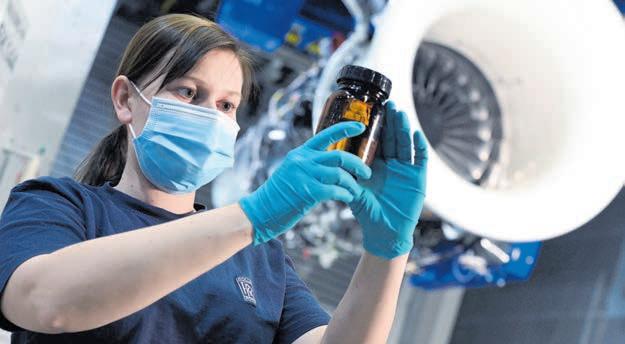
1 minute read
Green plane fuels set to remain more expensive than normal fuels until 2050
by cityam
THE COSTS of sustainable aviation fuels (SAF) will remain up to four times higher than jet fuel until 2050, according to new analysis.
Bain and Co found SAF prices in 2050 will remain two to four times higher than the average historical price of Jet A fuel, the most commonly used aviation fuel. The sector would also need to invest up to $2.1trn (£1.69trn) to produce enough to hit 2050’s net zero targets. This, plus the high maintenance costs of new aircraft, would mean airlines’ costs rising by 18 per cent.
Airlines have touted SAF as an essential component of net zero. However, there have been growing fears in the sector over the cost and supply of climate-friendly biofuels.
Bain and Co found total SAF supply would be 35 per cent of the projected demand for global jet fuel by 2050. The report calls for more government incentives and a strategy to “secure an affordable supply” of the biofuel SAF, to raise production to 60 per cent of demand.
Rates increased dramatically after a higher than expected inflation reading on 24 May raised concerns that the Bank of England would have to keep hiking, potentially raising rates to as much as 5.5 per cent. The base rate is currently 4.5 per cent. The data shows how savings rates offered to consumers often lag behind the rate charged on mortgages. Lenders have come under pressure from regulators and lawmakers for failing to pass on rate rises to savers while charging more for mortgages. An influential group of MPs has described the rates on offer at many banks as “measly”.
At the same time, many banks have reported bumper profits in the last few months as a result of higher interest rates, raising concerns that they are profiteering off higher rates. The banks argue that mortgage rates are not directly connected to interest rates, and are instead tied to swap rates, the expectation for what interest rates will be in 10 years time.








